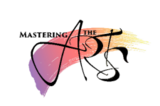
This video resource is presented as a real-world application of chemistry in the field of archaeology. Conservator, Nichole Doub, walks through the process of electrolytic reduction and how it is used to conserve archaeologically recovered artifacts. Use to support Maryland/NGSS for grades 5, MS, and HS. For 5-PS1-1, pair with the Exploratorium's "Copper Caper" activity for a similar reaction which can be conducted safely in the classroom--have students watch the video and discuss why the spoon formed tarnish and why the tarnish was not visible as particles moved from the spoon to the sacrificial anode. For MS-PS1-1, pair with the Exploratorium's "Indicating Electrolysis" activity and have the students explain the charges of oxygen/hydrogen and compare/contrast those with the silver and sulfur in the tarnish. Have students research silver sulfide (the usual tarnish found on silver artifacts) and model a single molecule of it before and after electrolysis. For HS-PS1-1 have students research silver sulfide and model a molecule of it prior to watching the video and predict what will happen when the positive or negative charges change. For HS-PS2-6, have students postulate why, historically, coins were made from silver and gold (with reference to their chemical reactions), then have students design a coin and specify a different metal to make it out of, explaining why the atomic properties of that metal make it appropriate for use in currency. If you evaluate or use this resource, consider responding to this short (4 question) survey at bit.ly/3G0bNqy
- Subject:
- Archaeology
- Art History
- Arts and Humanities
- Chemistry
- Physical Science
- Social Science
- Material Type:
- Activity/Lab
- Case Study
- Provider:
- Jefferson Patterson Park and Museum
- Author:
- JPPM Admin
- Date Added:
- 12/02/2021
